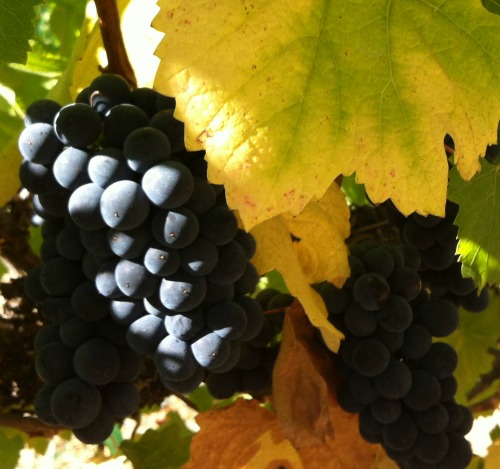 At Villa del Monte Winery, we work closely with several well-known local growers and we manage a few vineyards in the Santa Cruz Mountains. Although we do not own our own vineyards, we are still watching, testing, waiting, tasting, testing, and waiting a bit more for a triumvirate of signals that the grapes are ready to harvest. “We prefer to have the sugar, acidity and pH levels perfectly balanced, or as close to it as possible, at the time of harvesting,” according to Villa del Monte co-winemaker Neil Perrelli. Realistically, variables such as climate, soil, varietal, and vineyard practices can affect the grapes making it important to measure and monitor levels in the weeks leading to harvest.
At Villa del Monte Winery, we work closely with several well-known local growers and we manage a few vineyards in the Santa Cruz Mountains. Although we do not own our own vineyards, we are still watching, testing, waiting, tasting, testing, and waiting a bit more for a triumvirate of signals that the grapes are ready to harvest. “We prefer to have the sugar, acidity and pH levels perfectly balanced, or as close to it as possible, at the time of harvesting,” according to Villa del Monte co-winemaker Neil Perrelli. Realistically, variables such as climate, soil, varietal, and vineyard practices can affect the grapes making it important to measure and monitor levels in the weeks leading to harvest.
The red varietals, such as Pinot, will be ready to harvest when:
- Sugar level hits about 24 or 25
Brix is the percentage of sugars in the grapes. During photosynthesis, sugars are transferred from the grape leaves to the grape berries. At the time of harvest, about 20% of the grape consists of simple sugars. During the process of fermentation, these sugars will be broken down and converted by yeast into alcohol and carbon dioxide. As a rule, the sugar level at harvest is approximately twice the alcohol level of the finished wine, thus a brix of 24 will result in a wine with an alcohol level of about 12% or 13%.
- pH is within 3.2 and 3.5
Thinking back to high school chemistry, we remember that solutions (including wines) can have a pH in the range 0 to 14. A pH of 0 represents a strong acid solution, while a pH of 14 represents a strong alkaline solution. As comparison, distilled water has a theoretical pH of 7. “Low pH can result in wines with high acids whereas high pH may indicate that the grapes are overripe or that the soil has too much potassium,” explains Villa del Monte co-winemaker John Overstreet.
- Acid measures between .7 and .9
Grape acids, specifically tartaric and malic, are important since they protect the must (freshly pressed juice prior to fermentation) from spoilage. As sugar levels in the grapes rise, acid levels fall. All wines need some degree of acidity in order to be balanced. Wines with low acid tend to taste dull while wines with high acid are often tart and sour.
Right now, the vineyards are going through veraison as the grapes transition to ripeness. During this period, which can last from 30-70 days, the sugars rise, the acid levels fall, the grapes become pliable, the grapeskins darken as the chlorophyll decreases, and the minerals increase in concentration.
Aren’t you glad our winemakers worry about these things so that you can just sit back and enjoy a glass of nicely balanced wine?
